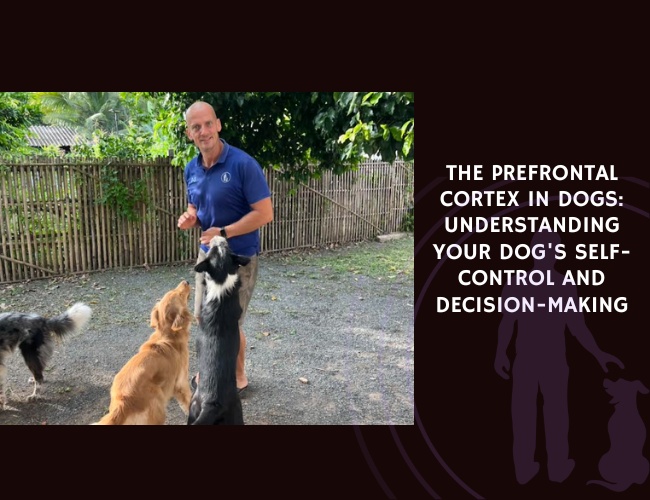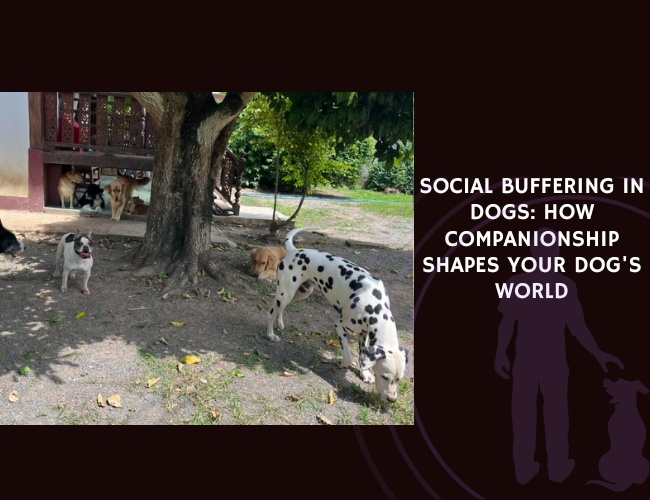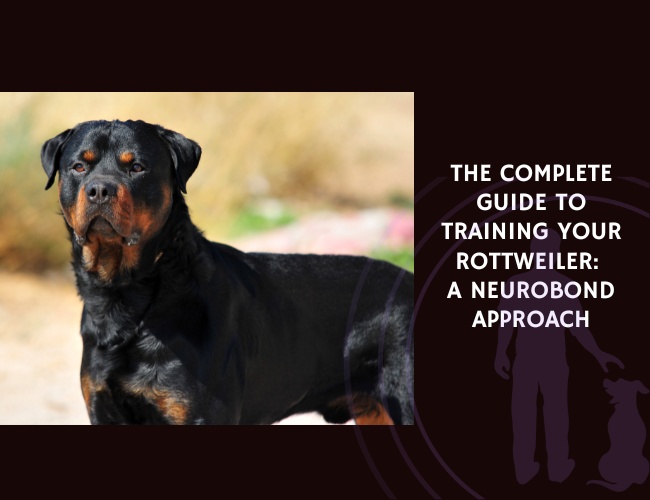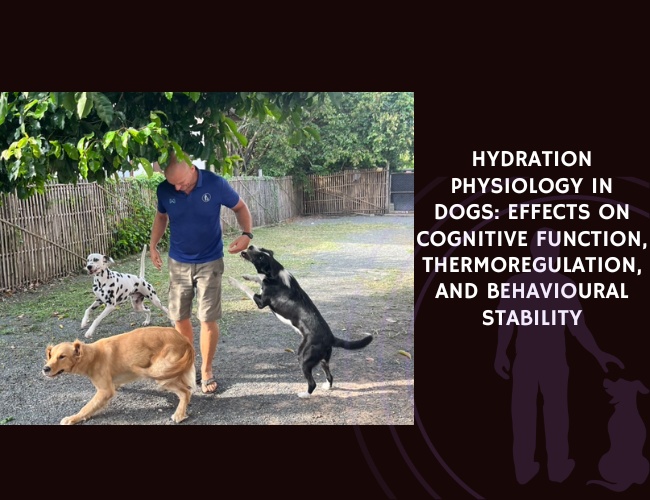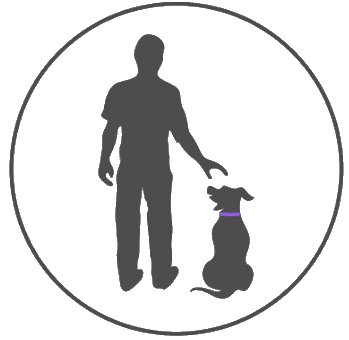Understanding the Fundamentals of Canine Social Play
Social play as a voluntary, non-essential activity that serves multiple purposes
Canine social play is a fascinating and multifaceted behavior in dogs. It is a voluntary, non-essential activity that, while appearing frivolous, serves several crucial functions. Unlike activities solely for survival, such as hunting and feeding, social play is not directly required for an individual dog’s survival. Yet, its benefits are extensive, highlighting the complexity of canine behavior and development.
Social play acts as a powerful tool for communication, social bonding, and skill development among dogs. It allows dogs to engage in behaviors that mimic their instinctual activities, but in a context that emphasizes learning and enjoyment. These interactions help dogs to develop critical social skills and build relationships with their peers, thereby facilitating harmonious coexistence.
Difference between random activity and structured social play behavior
A common misconception about dog play is that it is merely random activity without purpose or structure. However, canine social play is highly structured and governed by specific rules and signals that ensure it remains a positive and productive interaction.
Structured social play can be identified by the use of consistent communication signals, such as play bows, exaggerated movements, and self-handicapping behaviors. These signals help to ensure that all participants understand the playful intent, minimizing the risk of miscommunications that could escalate into aggression. In this structured context, dogs may take turns chasing or being chased, and larger or stronger dogs may inhibit their strength to match their playmate’s level, ensuring fairness and prolonged engagement.
Random activity, on the other hand, often lacks these clear signals and rules. It tends to be aimless and does not exhibit the purposeful behaviors seen in social play. For example, a dog running fast in an open field without interaction or intent to communicate with others is engaging in random activity rather than structured play.
The role of social play in canine development and social bonding
Social play is integral to a dog’s developmental journey. Beginning from a young age, puppies engage in play to explore their environment and understand social norms. Through play, they practice essential life skills such as chasing, stalking, and wrestling, which are critical for their motor skill development and coordination. These playful rehearsals prepare them for real-life situations, enhancing problem-solving abilities and physical fitness.
Moreover, social play acts as a primary avenue for social bonding among dogs and between dogs and humans. Positive play interactions foster trust and help establish and maintain social hierarchies within canine groups. Play also offers a low-stakes environment for dogs to test boundaries and learn appropriate behaviors, which can significantly contribute to social harmony.
On a broader scale, play interactions also support emotional regulation. The endorphins released during play serve to reduce stress, mitigate anxiety, and alleviate boredom, contributing to a dog’s overall well-being. Furthermore, play can help resolve conflicts and reinforce trust, as dogs use these interactions to rebuild any strained relationships.
As dogs mature, these early play experiences continue to shape their social interactions and problem-solving skills. The structures and rules learnt through play enable them to navigate complex social landscapes, ensuring successful integration into social groups and a better understanding of hierarchical dynamics.
Understanding canine social play is crucial for appreciating its profound impact on a dog’s development and social well-being. As we deepen our comprehension of these behaviors, we not only enrich our relationships with our canine companions but also contribute to their holistic health and happiness.
This insight into the voluntary nature of social play and its structured, rule-governed behavior provides a sturdy foundation for exploring the intricate ways in which dogs communicate and interact during their playful engagements.
Communication Signals in Social Play
When it comes to canine social play, understanding the signals dogs use to communicate is essential. These signals ensure that play remains a positive and enjoyable experience for all participants. Let’s explore some of the key communication signals, such as the play bow, exaggerated movements, and vocalizations, that dogs use during social play.
Play Bow: A Universal Play Invitation
The play bow is perhaps the most recognizable and universal signal in canine play. When a dog performs a play bow, it lowers its front legs while keeping its rear end elevated. This posture is essentially a dog’s way of saying, “Let’s play!” The play bow serves as an invitation, indicating that any subsequent actions—be they chasing, biting, or wrestling—are intended in the spirit of fun.
This signal helps to prevent misunderstandings and conflicts. When one dog offers a play bow, it communicates to another dog that their actions are not serious and that they are not a threat. This mutual understanding helps to set the tone for a cooperative and interactive play session.
Exaggerated Movements and Self-Handicapping Behaviors
During play, dogs often engage in exaggerated movements. These can include slow-motion bites, playful pouncing, or overly dramatic dodges and leaps. The purpose of these exaggerated actions is to signal that the behavior is not to be taken seriously. By behaving in an over-the-top manner, dogs can enjoy rough-and-tumble play without causing actual harm.
Additionally, self-handicapping is a vital part of play behavior, particularly among dogs of different sizes or strengths. In self-handicapping, a stronger dog may intentionally restrain itself to avoid overpowering its playmate. For instance, a large dog might lie on its back, allowing a smaller dog to “dominate” it momentarily. This behavior ensures that both dogs can enjoy play without one feeling threatened or overwhelmed.

Vocalizations and Their Contextual Meanings
Vocalizations play an important role in canine social play, adding another layer of communication. Dogs may use a variety of sounds, such as growls, barks, and whines, during play. The meanings of these vocalizations can vary based on the context in which they occur.
- Growls: In the context of play, growls are often low and rhythmic, indicating excitement rather than aggression. These playful growls help to maintain the energy and excitement of the play session.
- Barks: Short, sharp barks can signal enthusiasm or an invitation to chase. Dogs may also use barks to keep up the momentum or to respond to their playmate’s actions.
- Whines: Playful whines are generally high-pitched and brief. They can indicate curiosity or a request for a certain type of interaction, such as a continued chase or tug-of-war.
Understanding these vocal signals enhances the ability to interpret what dogs are communicating during play. This knowledge helps dog owners and trainers ensure that play remains safe and enjoyable for all canine participants.
By recognizing and respecting these communication signals, we can better support our dogs in their social interactions. This understanding fosters a deeper bond between dogs and humans, emphasizing the importance of play in canine development and social bonding.
As we move forward, it’s essential to consider how these communication signals influence the broader social dynamics of play and contribute to the establishment of hierarchies, trust, and conflict resolution among dogs.
The Social Dynamics of Play
Establishing and Maintaining Hierarchies
Social play among dogs is more than just an amusing pastime; it plays an essential role in defining and maintaining social hierarchies. When dogs engage in play, they experiment with roles and behaviors in a safe, controlled environment. This allows them to understand their own limits, as well as those of their playmates. Through play, dogs display and observe non-threatening dominance and submission signals, which are pivotal in establishing hierarchical structures within their packs. This dynamic is observed when one dog may take on an assertive role, while another responds with submissive signals, all within the playful context. This not only helps in preventing future conflicts but also clarifies each dog’s role within their social group, creating a more harmonious environment.
Trust-Building and Conflict Resolution
Engaging in social play is a foundational element in building trust and resolving conflicts among dogs. Play sessions offer a platform where dogs can test boundaries, exhibit trustworthiness, and reconcile differences. When dogs play together, they engage in behaviors such as chasing, wrestling, and mock fighting, which mimic real-life scenarios. These interactions require a great deal of trust, as dogs must rely on each other to respect the implicit rules of play and avoid causing harm. For instance, a stronger dog may use self-handicapping behaviors, intentionally inhibiting its strength to ensure the play remains enjoyable and safe for both parties.
This trust-building through play not only strengthens the bond between individual dogs but also aids in conflict resolution. After engaging in a play session, dogs are less likely to engage in aggressive behaviors, as they have already navigated potential conflicts in a controlled manner. This is why you often see dogs that play together frequently develop strong social bonds and exhibit fewer behavioral issues.
Adaptation of Play Styles: Dog-Dog and Dog-Human Interactions
One of the most fascinating aspects of canine social play is the remarkable adaptability of their play styles. Dogs are highly adept at modifying their play behaviors depending on their playmates, whether they are fellow dogs or humans. When playing with other dogs, they use a range of signals like play bows, vocalizations, and exaggerated movements to communicate their intent. These signals help ensure that the play remains friendly and that both parties are on the same page. Dogs often engage in role reversals during play, allowing them to experience different scenarios and promoting fairness and mutual enjoyment.
Interestingly, dogs also adapt their play behaviors when interacting with humans. They tend to mimic social behaviors that enhance the human-dog bond, demonstrating their extraordinary ability to adapt to different social contexts. Dogs are keen observers, and they quickly learn which behaviors humans find amusing or endearing. This adaptability is a testament to the deep bond that can form between dogs and their human companions. However, it’s crucial for owners to recognize and respect canine play cues to avoid unintentional stress or miscommunication.
Understanding the social dynamics of play is pivotal for appreciating the nuanced interactions that occur during canine play sessions. These playful interactions serve significant roles in shaping social hierarchies, building trust, resolving conflicts, and adapting to different social contexts, ultimately fostering a deeper bond between dogs and enhancing their social competence. The next focus will delve into the misconceptions and challenges associated with interpreting canine play behavior, shedding light on common misunderstandings and breed-specific differences.
Misconceptions and Challenges
Understanding the intricacies of canine social play can be challenging due to various misconceptions and breed-specific differences. At first glance, play might seem like a straightforward activity; however, beneath its playful exterior lies a complex behavior with multiple layers of communication, social bonding, and developmental importance.
Common Misinterpretations of Play Behavior as Purely Recreational
Many people view canine play as a purely recreational activity. This misinterpretation stems from the assumption that play for dogs is equivalent to leisure time for humans. In reality, play serves multiple purposes beyond simple enjoyment. According to, play is a voluntary activity that involves behaviors from different contexts, such as hunting or fighting, but performed in a modified, exaggerated manner. This modification ensures the activity is understood as non-threatening, promoting social interactions and development.
The structured nature of canine play is often overlooked. Specific signals, like play bows and exaggerated movements, are used to maintain a positive and non-threatening environment. These play behaviors are not random; they follow specific rules and signals to ensure a balanced interaction. This structured nature helps dogs learn important life skills, such as boundaries and bite inhibition, which are crucial for safe social interactions both with other dogs and humans.
Additionally, play is not always just about fun. It can be used to test boundaries and establish social hierarchies within the canine community. Ignoring these deeper layers of play behavior can lead to misunderstandings about a dog’s intent, as noted by.
The Impact of Anthropomorphism on Understanding Canine Play
Anthropomorphism, the attribution of human traits and emotions to animals, significantly impacts our understanding of canine play. While it is tempting to interpret a dog’s behavior through a human lens, this often leads to oversimplification and miscommunication. For instance, applying human motives to play behavior might cause owners to misunderstand their dog’s actions.
Understanding play behavior requires recognizing its contextual nature. The meaning of a play signal can change depending on the environment, participants, and individual personalities of the dogs involved. By respecting and learning about these canine-specific signals, owners can better support their dogs’ social interactions and avoid unintended stress or conflict.
Breed-Specific Differences in Play Styles and Preferences
Different dog breeds exhibit unique play styles shaped by their genetic backgrounds and original purposes. For instance, herding breeds like Border Collies might show more chasing and herding behaviors during play, while retrievers, such as Labradors, may engage in more fetching activities. These breed-specific tendencies highlight the importance of tailoring play activities to suit the dog’s inherent traits, ensuring a more fulfilling and appropriate play experience.
Recognizing and understanding these breed-specific differences can enhance the play experience and prevent potential misinterpretations. Owners should be aware of their dog’s natural inclinations and adapt play sessions accordingly to meet their dog’s physical and mental needs effectively.
Addressing these misconceptions and challenges is essential for fostering healthy and constructive play interactions. By acknowledging the multifaceted nature of canine play, respecting their unique communication signals, and understanding breed-specific tendencies, we can promote better social dynamics and well-being for our dogs.
As we delve into the benefits and developmental impacts of social play, it becomes clear how these interactions contribute to a dog’s overall health and growth.
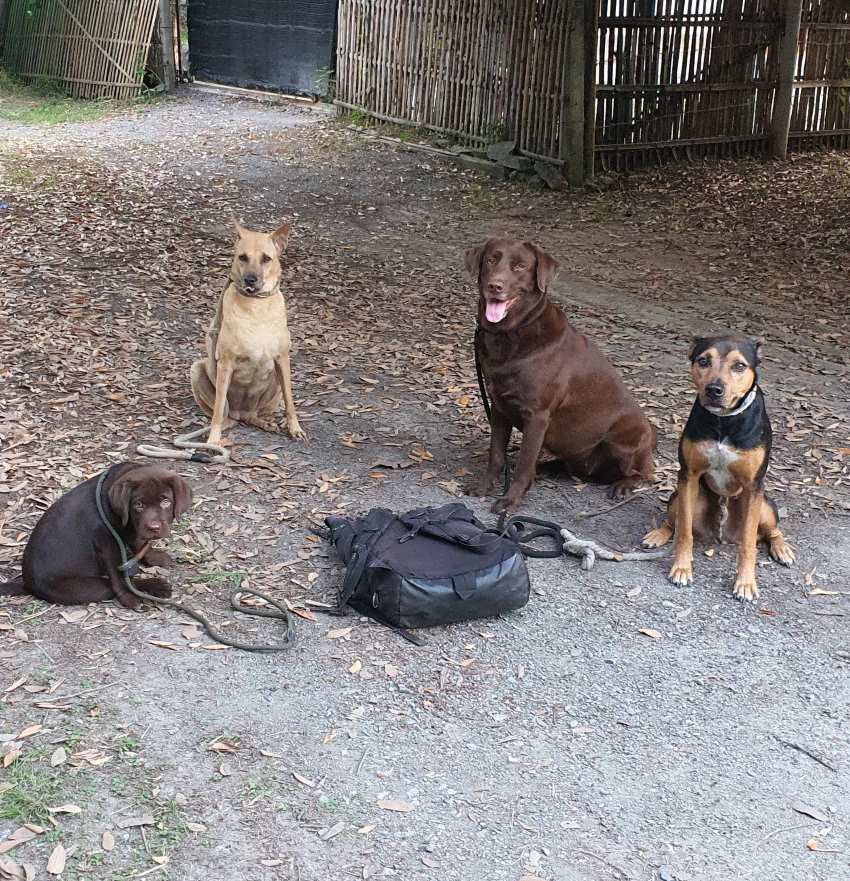
Benefits and Developmental Impact
Physical and Mental Stimulation through Social Play
Engaging in social play has numerous benefits for dogs, both physically and mentally. Physically, it enhances their fitness, motor coordination, and overall health. Activities like chasing, wrestling, and fetching during playtime help improve muscle tone and cardiovascular health. This type of exercise ensures that dogs remain agile and fit, which is crucial for their overall well-being.
Mentally, playtime is equally beneficial. During social play, dogs are often required to think on their feet, make quick decisions, and solve problems. These cognitive challenges stimulate their brains, enhancing creativity, problem-solving skills, and decision-making abilities. A mentally stimulated dog is less likely to develop behavioral issues that can arise from boredom and lack of engagement.
Emotional Regulation and Stress Reduction Benefits
Another critical aspect of social play is its role in emotional regulation and stress reduction. Playing allows dogs to express themselves in non-threatening environments, helping to release pent-up energy and emotions. Through play, dogs can experience joy, excitement, and even mild frustration, all of which contribute to a balanced emotional state.
Moreover, engaging in regular play can significantly reduce stress and anxiety levels in dogs. Play often involves repetitive and rhythmic movements, which have been shown to have a calming effect. For instance, the simple act of running or rolling around can help soothe an anxious dog. Play also promotes the release of endorphins — hormones that act as natural mood elevators, making play an effective natural remedy for stress.
Role in Developing Life Skills and Social Competence
One of the most significant benefits of social play is its role in developing life skills and social competence. Through play, dogs practice essential behaviors that prepare them for various real-life scenarios. For example, play often mimics behaviors such as hunting, stalking, and wrestling, which are crucial for their survival instincts. These activities help sharpen their motor skills and enhance their physical coordination.
Additionally, social play is fundamental in teaching dogs about boundaries and social norms. During interactions with other dogs, they learn critical social cues and behaviors such as bite inhibition, where they understand how hard they can bite during play without causing harm. This self-handicapping behavior ensures that play remains safe and enjoyable for all participants.
Furthermore, the dynamic of switching roles — for instance, alternating between the chaser and the chased — during play ensures that dogs understand the concept of fairness and reciprocity. These interactions help build trust and strengthen social bonds with both their canine peers and human companions, making dogs more socially adept and well-adjusted.
Social play also serves as a platform for conflict resolution. By engaging in playful activities, dogs can diffuse tensions that might arise from aggressive encounters, turning potentially hostile situations into positive experiences. This practice of managing conflicts through play is vital for reinforcing harmonious relationships within a group.
Understanding the varied, multifaceted benefits derived from social play underlines its importance in canine development. It is not merely a recreational activity but a critical behavior that aids in the overall development of dogs. By providing physical, mental, and emotional enrichment, social play is integral to ensuring that dogs lead healthy, well-rounded lives. Nurturing the natural play instincts of dogs can foster a deeper connection with them, creating a positive and supportive environment conducive to their growth and happiness.
Future Research Directions
Exploring the Connection Between Social Play and Cognitive Development
The relationship between canine social play and cognitive development is a burgeoning area of study that holds significant potential. Social play incorporates a variety of behaviors, such as chasing, wrestling, and role reversals, that offer more than just physical benefits. These activities are critical for developing problem-solving abilities and motor coordination. Early play experiences help young dogs grasp social cues, respect boundaries, and improve their decision-making skills.
One key aspect worth investigating is how play influences learning abilities. Research suggests that playful interactions contribute to cognitive flexibility, allowing dogs to adapt to new situations more effectively. They simulate real-life scenarios through play, which could aid in retaining and applying learned behaviors in practical contexts. Understanding this connection could lead to improved training methods and developmental strategies for pet owners and dog trainers.
Investigating Interspecies Play Dynamics
Interspecies play, particularly between dogs and other animals like cats or humans, offers another fascinating avenue for research. These interactions differ from intraspecies play due to varying communication styles and social structures. Understanding how dogs adapt their behavior to engage with different species can provide insights into their social intelligence and flexibility.
Dogs often modify their play signals, such as play bows and exaggerated movements, to effectively communicate with humans and other animals. Identifying the nuances in these interactions could help improve the understanding of the social bonds between different species. It would also aid in cultivating more harmonious relationships in multi-pet households and enhancing human-animal bonds.
Therapeutic Applications for Anxious or Reactive Dogs
Structured play has emerged as a promising therapeutic modality for addressing anxiety and reactivity in dogs. Many dogs experience stress and behavioral issues, which affect their overall well-being and quality of life. Research has shown that engaging in regular, structured play can significantly reduce stress, anxiety, and improve emotional regulation.

Therapeutic play can serve as a safe and controlled outlet for energy, allowing dogs to practice self-control and build resilience. Activities that involve problem-solving or physical exertion not only alleviate anxious tendencies but also promote confidence and social competence. Future research should focus on identifying specific play activities that cater to different behavioral needs, tailoring therapeutic interventions to individual dogs for maximum effectiveness.
Understanding these aspects better can lead to the development of targeted strategies for promoting canine health and well-being through play interactions. By delving into these future studies, we can continue to unravel the complexities of canine social play and enhance our approach to dog care and enrichment.
Unlocking the Canine Playground: Your Turn to Engage
As we’ve uncovered, canine social play isn’t just a casual romp—it’s a sophisticated symphony of communication, skill-building, and bonding. It’s the puppy tripping over its own paws, only to bound back up with a renewed play bow, ready to learn, connect, and enjoy.
So, what’s your role in this dance of canine discovery? Simply being an observant and engaged spectator can deepen your bond with your furry friend. Observe their play signals, mimic their joy, and you’ll be tapping into their language.
But why stop there? Calling all dog lovers! It’s time to get involved. Organize playdates, set up obstacle courses, and let your dog’s inner playmaster shine. Witness their growth, their joy, and their unspoken gratitude.
Ready to unravel more secrets of the canine world? Stay tuned, stay curious, and above all, keep playing! Your furry friend is waiting.


